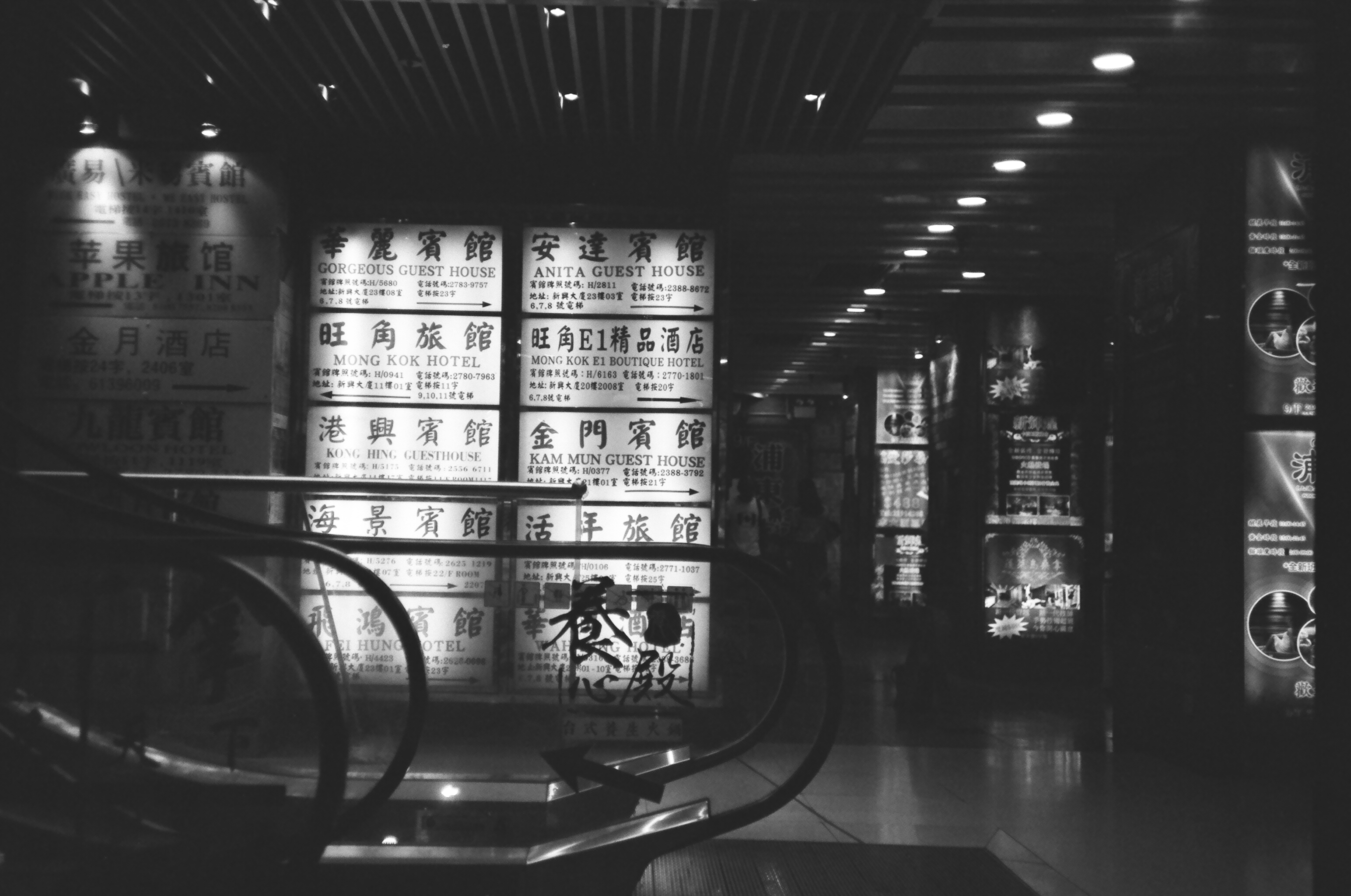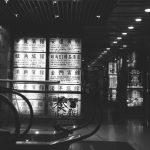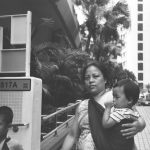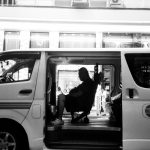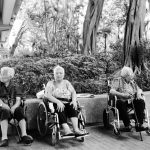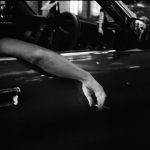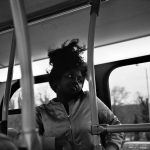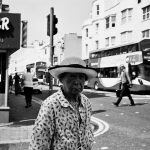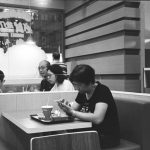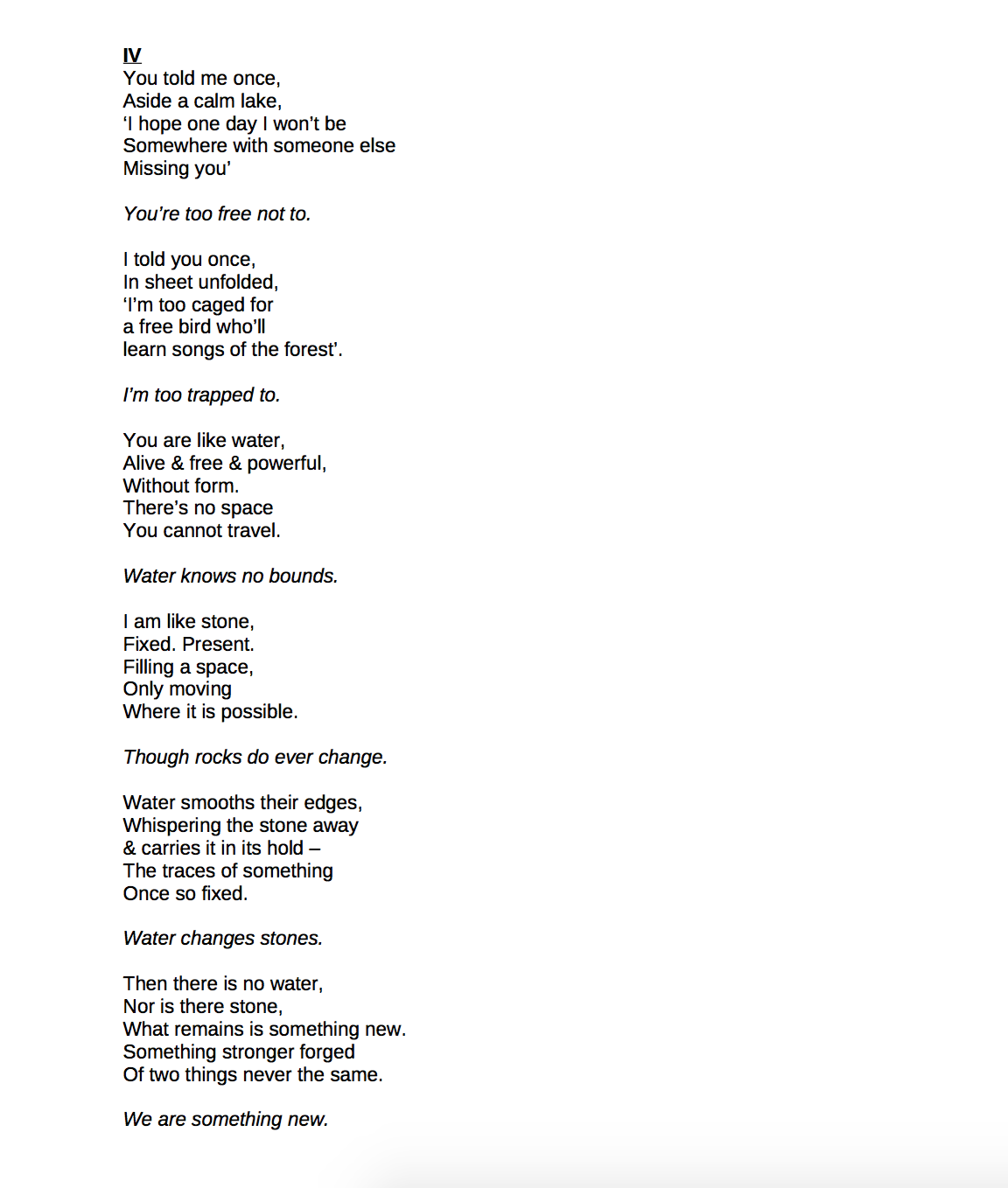Dominic Cheung is a photographer and third year Art History student at the University of Sussex, born and raised in Hong Kong. Dominic has been infatuated by the arts since his youth, picking up his first camera at the early age of seven. Though his artistic practice spans across a variety of 2D media, black-and-white film photography is his current favourite. His camera of choice is an Olympus 35RC, a manual film camera dating back to the 70s.
What is it about black-and-white film that appeals to you stylistically?
Firstly, it gives me more control whilst shooting on the streets. Shooting in colour means that the image can be ruined if someone decides to wear a fluorescent orange coat and run into the background, whereas monochrome film lets me blur objects into a harmonious shade of grey. Secondly, the removal of colour means I cannot use it as a narrative device, hence I have to narrate my story by other means, in my case that would be creating an intriguing image through good composition. Thirdly, it lets me see things in a new perspective, literally. Monochrome makes me appreciate textures, and their unique way of adding to the richness and depth of an image.
Is there a particular subject or a certain theme that you find yourself drawn to when taking photographs?
I like to take pictures of old people, they seem to have an incredible ability to make images so much more interesting, with a gesture, a wrinkle or a frown. I love the textures of buildings, clouds and beaten-up motorcycles. Advertisements and words also pull me in, especially when they are juxtaposed by environments that are wholly contradicting; the information-overloaded streets of Hong Kong have inspired my taste in making sense of chaos. I love taking pictures of people around me too, to which I would like to thank my friends in Art History for tolerating me, the obnoxious guy pointing a camera around all day long.
A lot of your photography focuses on cities and their inhabitants. What is it about city life that makes you want to capture it?
It is quite easy to overlook what is closest to us in our everyday lives; I want to rediscover the beauty that surrounds us. The overcrowding of messages and meanings are part of what I’m trying to make sense of, especially growing up in Hong Kong where the landscape seems to immediately contradict itself, be it its Eastern versus Western ideologies or its great social disparity. These competing messages are why I find cityscapes and their people boundlessly interesting.
Are there any particular photographers or artists who inspire your work?
Well, the first would be Fan Ho, as his ability to create an interesting image in considering very few things other than composition has left a mark on my personal work; his photographs seemingly have the ability to transport me back to a simpler time of old Hong Kong. Bruce Gilden has also taught me the necessity of being fearless. I like to apply Ansel Adams’ techniques when it comes to capturing the city, as well as those of William Klein’s fashion photography. Artists and creators like Stanley Kubrick, Mark Rothko, Francis Bacon, Luigi Ghirri, Daido Moriyama, Michael Wolf, Martin Parr have all influenced my work in various different ways.
What would you like to communicate through your photographs?
Perhaps the beauty of the everyday people, or every person. Maybe I’m trying to capture a kind of loneliness or chronic condition. I don’t do it consciously, but my pictures often seem desolated. I think the reason I try to pay attention to compositions is that they often exacerbate the impact of the urban environment has on people, whereby they might be physically close to each other, but human connections are becoming more difficult. A lot of the time, I think I’m just take photographs to record memories, especially those with friends, or to capture things I can look back on when I’m old.
Words: Elizabeth Richardson
Instagram: @dominicced

